Welcome to Ranthambore National Park, India’s premier wildlife destination nestled in Sawai Madhopur, Rajasthan. Known for its Royal Bengal Tigers, ancient forts, scenic lakes, and diverse wildlife, Ranthambore is a top-rated choice for jungle safari in India. Spread across 392 square kilometers, the park features 10 safari zones, each offering a unique chance to witness wild tigers, leopards, sloth bears, jackals, hyenas, and over 270 species of birds. Whether you’re a photographer, adventurer, or family traveler, Ranthambore promises an unforgettable safari experience in the heart of nature. Explore thrilling morning and evening safaris, guided by expert naturalists. Book your Ranthambore safari online and secure your seat in India’s wild heartland.
📢 News
📢 Important Notice: Safari bookings at Ranthambore National Park are regulated as per forest department guidelines.
Please be advised that Zones 6 to 10 remain closed every Tuesday, while Zones 1 to 5 are closed every Wednesday for
weekly maintenance and wildlife conservation activities. We request all visitors to plan their trips accordingly.
This website, ranthamborenationalpark-india.com, is officially operated by
Trip to Ranthambore, a trusted travel agency based in Sawai Madhopur. For real-time safari updates,
bookings, and travel assistance, feel free to contact our expert team.
Ranthambore National Park India
Experience the untamed spirit of Ranthambore — where nature roars, rivers flow free, and every sunrise tells a wild story.
Sound On
Unveiling the Kingdom of Tigers and Untamed Beauty
Spot iconic tigers like Sultana T-107, Riddhi T-124, and Noor T-39 in their natural habitat .
Ranthambore Safari Timings
Monthly Timetable
The timings for safari at Ranthambore National Park in India may vary depending on the season. Generally, there are two safari slots available each day, one in the morning and one in the afternoon. The morning safari usually starts early, around sunrise, while the afternoon safari starts in the afternoon and ends before sunset.Ranthambore is considered the top destination for a Rajasthan tiger safari, attracting visitors from around the world.
| Months | Morning Safari | Evening Safari |
|---|---|---|
| October 1 to October 31 | 6:30 a.m. to 10:00 a.m. | 2:30 p.m. to 6:00 p.m. |
| November 1 to January 31 | 7:00 a.m. to 10:30 a.m. | 2:00 p.m. to 5:30 p.m. |
| February 1 to March 31 | 6:30 a.m. to 10:00 a.m. | 2:30 p.m. to 6:00 p.m. |
| April 1 to May 15 | 6:00 a.m. to 9:30 a.m. | 3:00 p.m. to 6:30 p.m. |
| May 15 to September 30 | 6:00 a.m. to 9:30 a.m. | 3:30 p.m. to 7:00 p.m. |
🛑 Note: On Wednesdays, Zones 1 to 5 remain closed, while Zones 6 to 10 remain open and operational for safari bookings.
Ranthambore Safari Pricing
Pricing Details
Ranthambore National Park offers an incredible opportunity to explore the untamed wilderness and witness the majestic wildlife in their natural habitat. As you plan your visit to this renowned national park, it’s essential to understand the pricing structure for safaris to make informed decisions and ensure an unforgettable experience within your budget. Ranthambore is among the top choices for wildlife safari in Rajasthan, attracting nature enthusiasts eager to spot tigers in Rajasthan’s dense forests.
| Safari | Indian National (Per Person) | Foreign National | Time Duration | Zone |
|---|---|---|---|---|
| Canter Safari | 1500 INR | 3500 INR | 3.30 Hrs | Single Zone |
| Gypsy Safari | 2200 INR | 4200 INR | 3.30 Hrs | Single Zone |
| Private Gypsy | 13,200 INR | 25,200 INR | 3.30 Hrs | Single Zone |
| Private Canter | 30,000 INR | 70,000 INR | 3.30 Hrs | Single Zone |
| Tatkal Gypsy | 30,000 INR | 45,000 INR | 3.30 Hrs | Single Zone |
| Current Booking | 2,000 INR (Canter Safari) | 4,000 INR (Canter Safari) | 3.30 Hrs | Single Zone |
Ranthambore Tigers Territory
Tigers Territory Details
| Zone | Tiger | Information |
|---|---|---|
| Zone 1 | 🐅 T-107 Sultana & Cubs, 🐅 T-01, 🐅 T-105 Noori | 👉 KNOW MORE |
| Zone 2 | 🐅 T-107 Sultana & Cubs, 🐅 T-60, 🐅 T-119 | 👉 KNOW MORE |
| Zone 3 | 🐅 Riddhi -T124 & Cubs, 🐅 T-120 & Cubs | 👉 KNOW MORE |
| Zone 4 | 🐅 Shakti T-111, 🐅 T-19, 🐅 T-121 | 👉 KNOW MORE |
| Zone 5 | 🐅 T-102, T-125, 🐅 T-103, 🐅 T-41 | 👉 KNOW MORE |
| Zone 6-10 | 🐅 Noor T-39 & Cubs, 🐅 T-58, 🐅 T-114 & Cubs, 🐅 T-108, 🐅 T-99 & Cubs, 🐅 T-62, 🐅 T-99, 🐅 T-108 | 👉 KNOW MORE |
Wildlife Packages
Ranthambore National Park is one of the biggest and most renowned national park in Northern India.

Ranthambore 1N/2D Tour Package from Jaipur
August 19, 2025
No Comments
Tour Highlights: Embark on an exciting Ranthambore 1N/2D Tour Package From Jaipur and explore the wild heart of Ranthambore National Park. Enjoy morning and evening
Adventurous Jaipur & Ranthambhore Honeymoon trip 4N/5D
February 23, 2025
No Comments
Celebrate your honeymoon with an adventurous 4-night, 5-day trip to Jaipur and Ranthambore. Explore Jaipur’s rich history, including its grand palaces and forts. Then, head
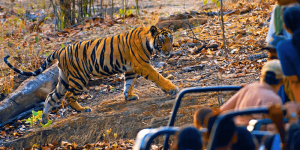
Ranthambore National Park Package from Jaipur
February 23, 2025
No Comments
Embark on a thrilling wildlife adventure from Jaipur to Ranthambore, famous for its Bengal tigers. Enjoy Jeep safaris in the park, spot various wildlife, and

Ranthambore Tour Itinerary with Udaipur & Mount Abu
February 23, 2025
No Comments
Embark on a fascinating journey through Rajasthan, starting with a thrilling wildlife experience in Ranthambore National Park, home to Bengal tigers. Explore the historic Ranthambore
Things to Do Beyond Safari
More Adventures Around Ranthambore
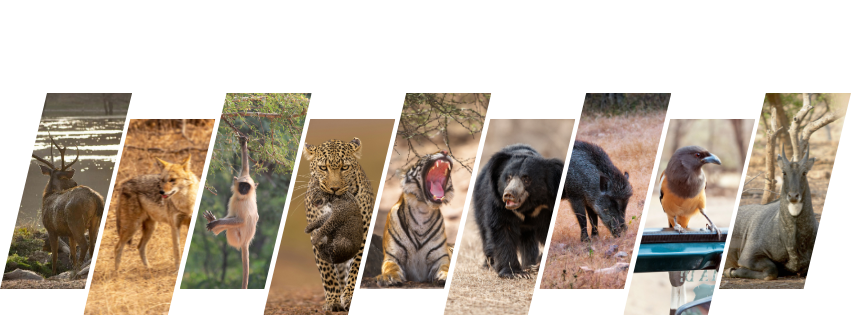
Ranthambhore National Park, located in the state of Rajasthan, India, is renowned for its majestic Tiger Reserve, which is one of the country’s largest and most famous tiger reserves. Besides tiger sightings, there are numerous other activities and attractions to explore in and around Park.
Jungle Safari
A jungle safari is an exciting adventure that involves exploring and observing wildlife in their natural habitat, typically in dense forested areas known as jungles or rainforests. These safaris provide an opportunity to see a wide variety of animals, birds, and plant species that are unique to these ecosystems.
Bird Photography
Tiger Reserve offers fantastic opportunities for photography enthusiasts. Capture the majestic tigers, stunning landscapes, and vibrant culture of the region through your lens. Early mornings and late afternoons are the best times for bird photography as the lighting is soft and warm.
Chambal Safari
The Palighat Chambal Safari is a popular tourist attraction located in the Chambal Valley of India. It offers visitors a unique opportunity to explore the diverse wildlife and scenic beauty of the region. The safari takes place along the Chambal River, which is known for its rich biodiversity.
Ranthambore fort
Sightseeing in Ranthambore is an Amazing Experience That Everyone Should Try at Least Once in Their Lifetime. Embark on a Trip and Be Amazed by the Unforgettable Beauty of the Jungle in the Ranthambore Tiger Reserve. Get Ready for an Adventure Like No Other
Famous Attractions within national Park
Attraction Details
Tourists Places – Ranthambore National Park is one of the most popular tourist destinations in India. There are many places to see in Sawai Madhopur like Fort, Wildlife Sanctuary, Lake, Safari ,Kachida Valley, Padam Talao, hotels,Trinetra Temple etc.

🏰Ranthambhore Fort
Visit the historic Ranthambhore Fort, a UNESCO World Heritage Site that dates back to the 10th century. Explore the impressive architecture, ancient temples, and enjoy panoramic views of the surrounding landscape
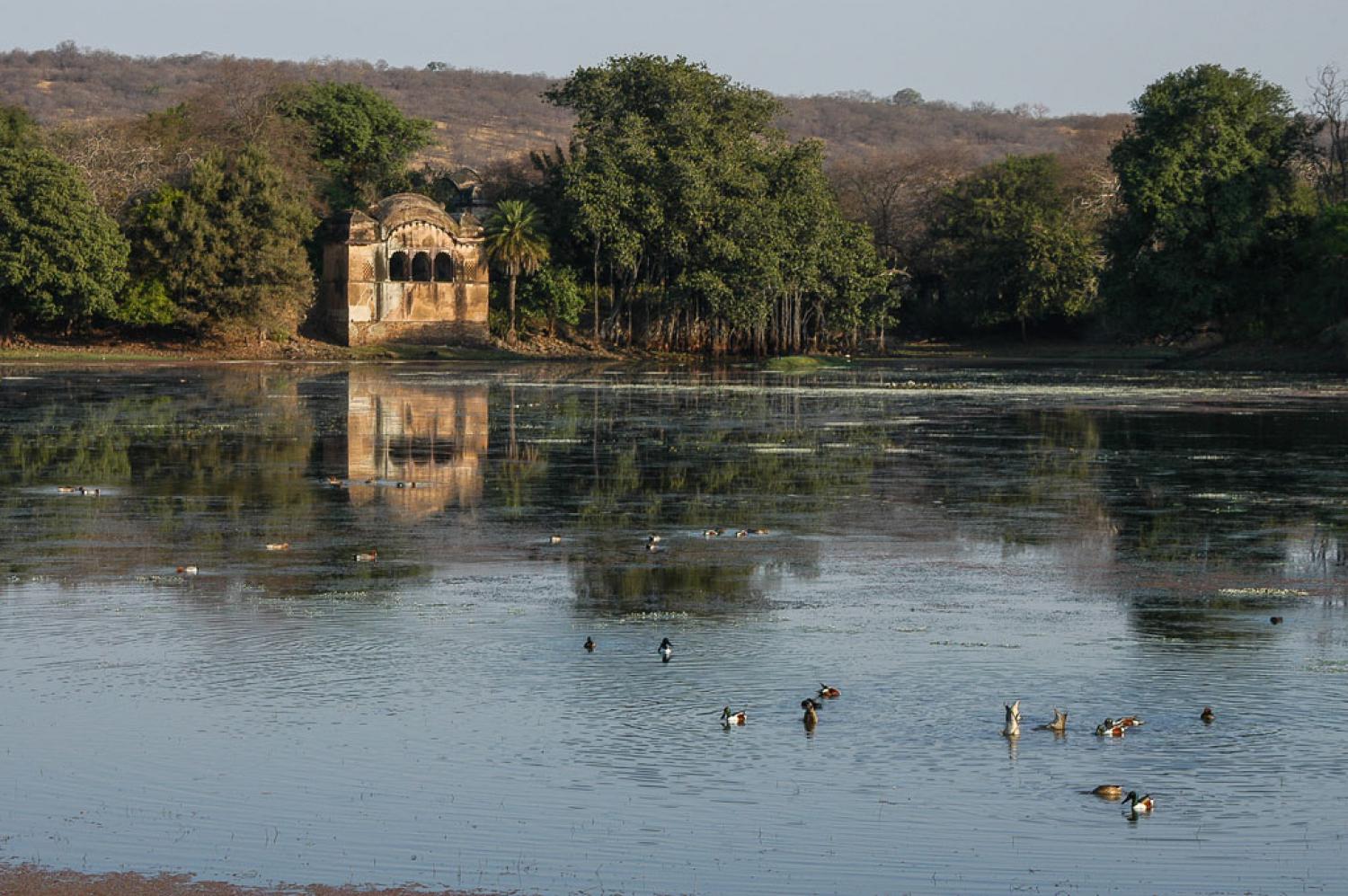
🏞️Padam Talao
In addition to its natural beauty, Padam Talao is also home to the iconic Jogi Mahal, a historic hunting lodge situated on the lakeshore. Jogi Mahal offers stunning views of the lake and surrounding wilderness.

🌄Kachida Valley
Kachida Valley is a picturesque and rugged terrain within the park that spans approximately 500 hectares. It is characterized by its undulating landscape, rocky outcrops, and dense vegetation, offering a unique habitat .
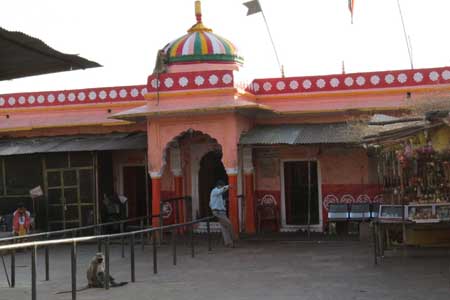
🛕Trinetra Temple
Pay a visit to the Trinetra Ganesh Temple located within the Ranthambhore Fort. This temple is dedicated to Lord Ganesha and is believed to be one of the oldest Ganesha temples in Rajasthan.
📷 Perfect for nature photography, family trips & wildlife tours
🐅 Ranthambore Tiger Reserve, Sawai Madhopur, Rajasthan
Located in Sawai Madhopur, Rajasthan, India 📍, Ranthambore Tiger Reserve spans 1,334 km² and is famous for its rich biodiversity and historical landmarks. Declared a sanctuary in 1955 and part of Project Tiger 🐅 in 1973, it became a national park in 1980.
Home to tigers, leopards, sloth bears, hyenas, deer, jackals, foxes, and over 270 bird species, visitors can enjoy Jeep and Canter safaris across 10 zones. Best visited from October to June, nearby attractions include Ranthambore Fort, Trinetra Ganesha Temple and Padam Talao.
| Location | Sawai Madhopur, Rajasthan, India |
| Established | Sanctuary (1955), Tiger Reserve (1973), National Park (1980) |
| Total Area | 1,334 km² (515 sq mi) |
| Major Wildlife | Tigers, Leopards, Sloth Bears, Hyenas, Sambar, Crocodiles |
| Bird Species | Over 270 |
| Safari Types | Jeep & Canter (Morning & Afternoon) |
| Safari Zones | 10 Zones |
| Climate | Hot summers (Apr–Jun), Pleasant winters (Oct–Mar) |
| Nearest Railway | Sawai Madhopur |
| Nearest Airport | Jaipur International Airport |
🐾 Safari in Ranthambore
Experience the raw wilderness of Ranthambore National Park, one of India’s most iconic tiger reserves. Spot majestic Bengal tigers, leopards, sloth bears, hyenas, and over 270 bird species in their natural habitat.
A safari here isn’t just about wildlife—it’s about exploring hidden waterholes, ancient ruins, and breathtaking landscapes that make Ranthambore a world-renowned destination.
Whether you’re a photographer, family traveler, or nature lover, Ranthambore promises an unforgettable adventure in the heart of the jungle.
📅 Book Your SafariTIGER CONSERVATION IN RANTHAMBORE
Project Tiger & NTCA Efforts
In 1973, major conservation efforts began in the Ranthambore Tiger Reserve with the launch of Project Tiger. This initiative was started by the Government of India after a 1972 census revealed a dramatic decline in the country’s tiger population due to poaching and habitat loss.Ranthambore became a key sanctuary under this project, with zones categorized into core areas—where human activity is restricted—and buffer zones, which are managed to allow eco-friendly development.As a prominent tiger reserve in Rajasthan, Ranthambore continues to play a key role in India’s tiger conservation success story.
To support and monitor the project’s effectiveness, the National Tiger Conservation Authority (NTCA) was established. The NTCA, backed by the Wildlife Protection Act (amended in 2006), plays a vital role in tiger monitoring, anti-poaching efforts, and tourism regulation.Thanks to these initiatives, Ranthambore’s tiger population increased from 66 in 2019 to 81 in 2021. Nationally, India’s tiger population is growing at an annual rate of approximately 6%. NTCA member SP Yadav stresses that involving local communities in conservation and eco-tourism jobs is key to sustaining this success.
Where Would You Like to Stay?

Budget
Budget Guesthouses
Perfect for backpackers & solo travelers. Clean, basic rooms with local food.
From ₹1,000/night
Explore →
Standard
Comfortable Hotels
Ideal for families. AC rooms, WiFi, local cuisine, and close to park gates.
From ₹2,500/night
View Options →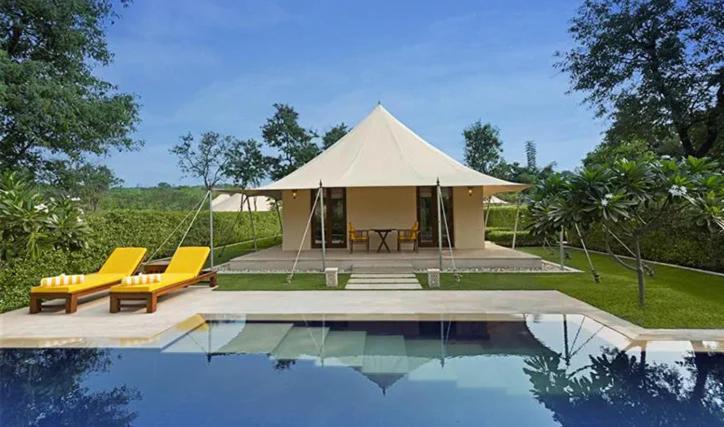
Deluxe
Nature-Themed Resorts
Spacious rooms, pools, gardens, and beautiful nature views. Great for couples.
From ₹4,500/night
See Resorts →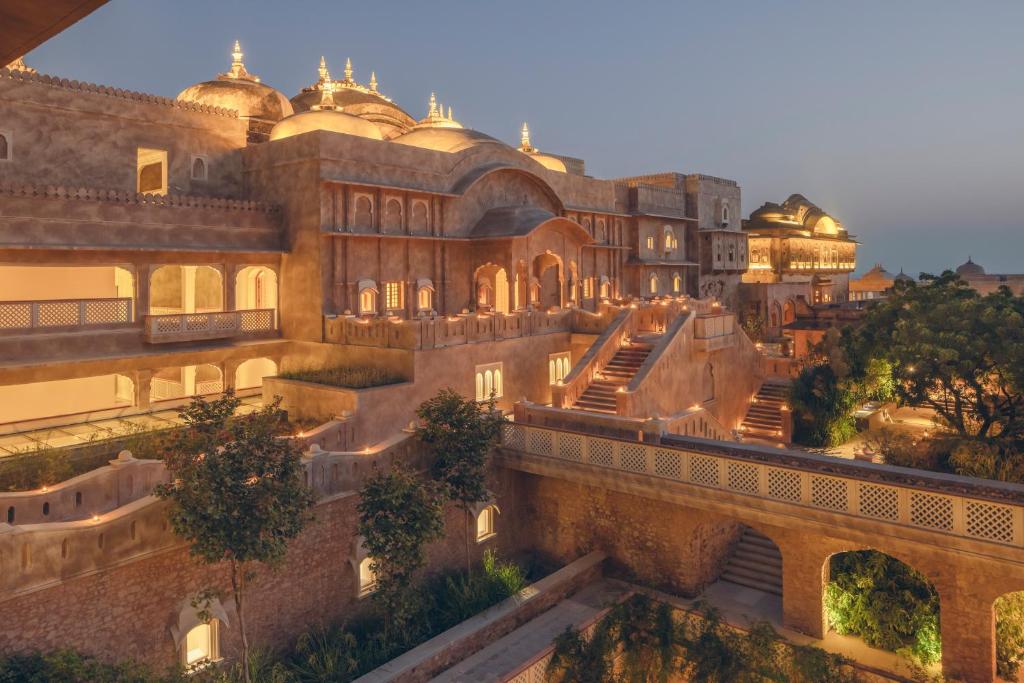
Luxury
Luxury Jungle Stays
Premium tented camps & villas. Curated safaris, private chefs, & royal comfort.
From ₹12,000/night
Browse Luxury →